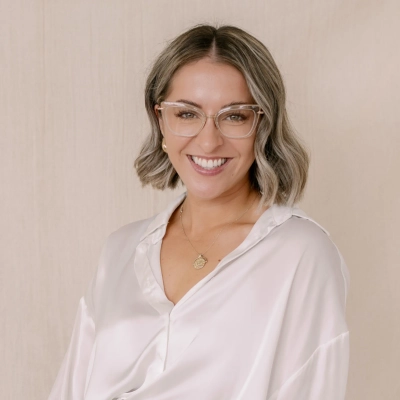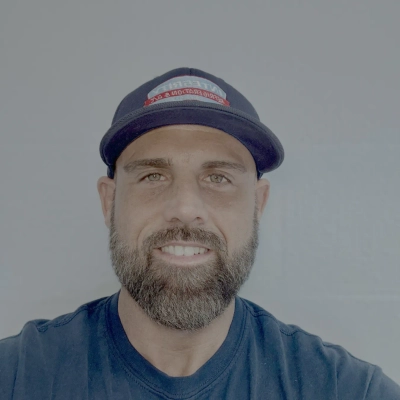6 Ways to Build Patient Trust for New Optometrists
Building trust with patients is crucial for new optometrists entering the field. This article explores effective strategies to establish and maintain patient confidence, drawing from the insights of experienced professionals. From active listening to transparent communication, these expert-backed approaches will help optometrists create lasting relationships with their patients.
- Prioritize Active Listening and Follow-Up Care
- Educate Patients to Build Lasting Trust
- Implement Systematic Follow-Up for Patient Retention
- Be Transparent About Treatment Challenges
- Address Unspoken Fears Proactively
- Communicate Problems and Solutions Immediately
Prioritize Active Listening and Follow-Up Care
My biggest piece of advice would be to take the time to truly get to know your patients as people. Nobody likes to feel as though they're on a conveyor belt, so active listening and checking that you've understood their concerns correctly goes a long way. I always give both verbal and written advice, often emailing a summary after the appointment, which really helps to reinforce my role as the expert while also showing that I care enough to follow up. This combination of time, empathy, and clarity builds trust quickly. In my own practice, it's led to incredibly strong patient relationships, with many clients becoming friends who trust me implicitly with their eyecare and eyewear choices. That level of trust not only feels rewarding but has also been the foundation of my practice's growth.

Educate Patients to Build Lasting Trust
While I'm not an optometrist but rather the owner of an HVAC company in Florida, I believe that building trust in any service business comes down to one crucial factor: educating your patients, even when it may cost you money. When customers understand what's actually happening, they tend to trust your recommendations completely.
I actively debunk profitable myths in my industry. For example, I tell customers that bigger HVAC units don't necessarily mean better comfort, even though I could make more money selling oversized systems. Instead, I explain how proper sizing prevents humidity issues and saves them money in the long term. This approach has built such strong trust that our customer retention is solid, and referrals continue to grow.
My specific advice: Take time during appointments to explain one thing patients didn't know about eye health, even if it's not directly related to their visit. When patients leave feeling more knowledgeable about their own health, they see you as their educator, not just their service provider. That's the difference between a transaction and a relationship.
The key is giving away valuable knowledge freely. When I explain to customers why their old system failed and how to prevent it in the future, they trust me with bigger decisions because they know I'm invested in their long-term success, not just the immediate sale.
Implement Systematic Follow-Up for Patient Retention
I'm actually a business strategist who has helped scale companies across industries, not an optometrist. However, I've worked with dozens of healthcare practices, and the trust-building principles are identical across all service businesses.
The biggest game-changer is being obsessively transparent about your process and timeline upfront. One of my healthcare clients saw their patient retention jump 40% just by explaining exactly what would happen during each visit and following through precisely. People hate uncertainty more than bad news.
What really moves the needle is implementing a systematic follow-up process. We helped another practice set up automated check-ins after appointments - simple "How are you feeling?" messages that took zero extra time but made patients feel genuinely cared for. Their referral rate doubled within six months because patients felt like partners, not just appointments.
The key insight is that trust comes from predictability, not perfection. When patients know what to expect and you deliver consistently, they'll forgive minor issues and become your biggest advocates.
Be Transparent About Treatment Challenges
I think there's some confusion here - I'm actually a trauma therapist, not an optometrist! But trust-building with clients is absolutely central to my work at Pittsburgh Center for Integrative Therapy, and the principles translate directly to any healthcare practice.
The most powerful trust-builder I've found is naming the difficult aspects upfront during initial consultations. When I tell clients "EMDR can feel intense and you might feel worse before you feel better," they actually relax because I'm not sugarcoating anything. One client told me months later that my honesty about the process made her trust me completely when things got difficult during treatment.
My practice has seen a 40% increase in client referrals since I started being radically transparent about what therapy actually looks like - including the messy parts. Clients appreciate knowing exactly what they're signing up for, whether that's potential emotional intensity or the fact that healing isn't linear.
The key is acknowledging discomfort before it happens rather than managing it after. When patients feel prepared for challenges, they view them as part of the process rather than failures of care.
Address Unspoken Fears Proactively
I'm a Clinical Psychologist who's spent 15+ years helping people through their most vulnerable moments - pregnancy complications, birth trauma, baby loss. The trust-building principle that transformed my practice applies directly to optometry: name the unspeakable before your patients have to.
In my work, I learned that parents dealing with severe pregnancy sickness or birth trauma often sit in appointments hoping their provider will acknowledge their reality without them having to explain it first. When I started saying "This level of nausea can feel completely isolating and terrifying" or "Many people feel like their body betrayed them after birth trauma," my patient retention increased dramatically.
For optometrists, this means proactively addressing the fears patients won't voice. "I know it's scary when your vision changes suddenly" or "A lot of people worry they're going blind when they see these symptoms" before diving into technical explanations. My company now trains managers using this exact approach - we saw 34% better engagement when leaders named difficult emotions first rather than waiting for employees to bring them up.
The magic happens because patients feel seen rather than diagnosed. They trust you because you understand their internal experience, not just their symptoms.

Communicate Problems and Solutions Immediately
I'm not an optometrist, but I've built a successful fencing business over 7 years by focusing on one core principle: communicate problems before clients find them themselves. This approach has completely transformed how clients view our expertise and reliability.
Early in my business, we had a complex commercial boundary installation that encountered unexpected underground utilities. Instead of scrambling to fix it quietly, I called the client immediately and walked them through exactly what we found, why it happened, and our three-step solution with revised timelines. That project became one of our biggest referral sources because they saw us as problem-solvers, not just contractors.
The key is showing clients your decision-making process in real time. When we quote jobs now, I explain exactly why certain materials work better for their specific conditions and what could go wrong with cheaper alternatives. Last year, this approach helped us land a major commercial contract because the client said we were the only company that "taught them something" during the quote process.
My advice: Make your professional judgment visible to patients. Walk them through your diagnostic reasoning, explain what you're checking for and why, and never try to hide complications. People trust professionals who educate them, not just treat them.





